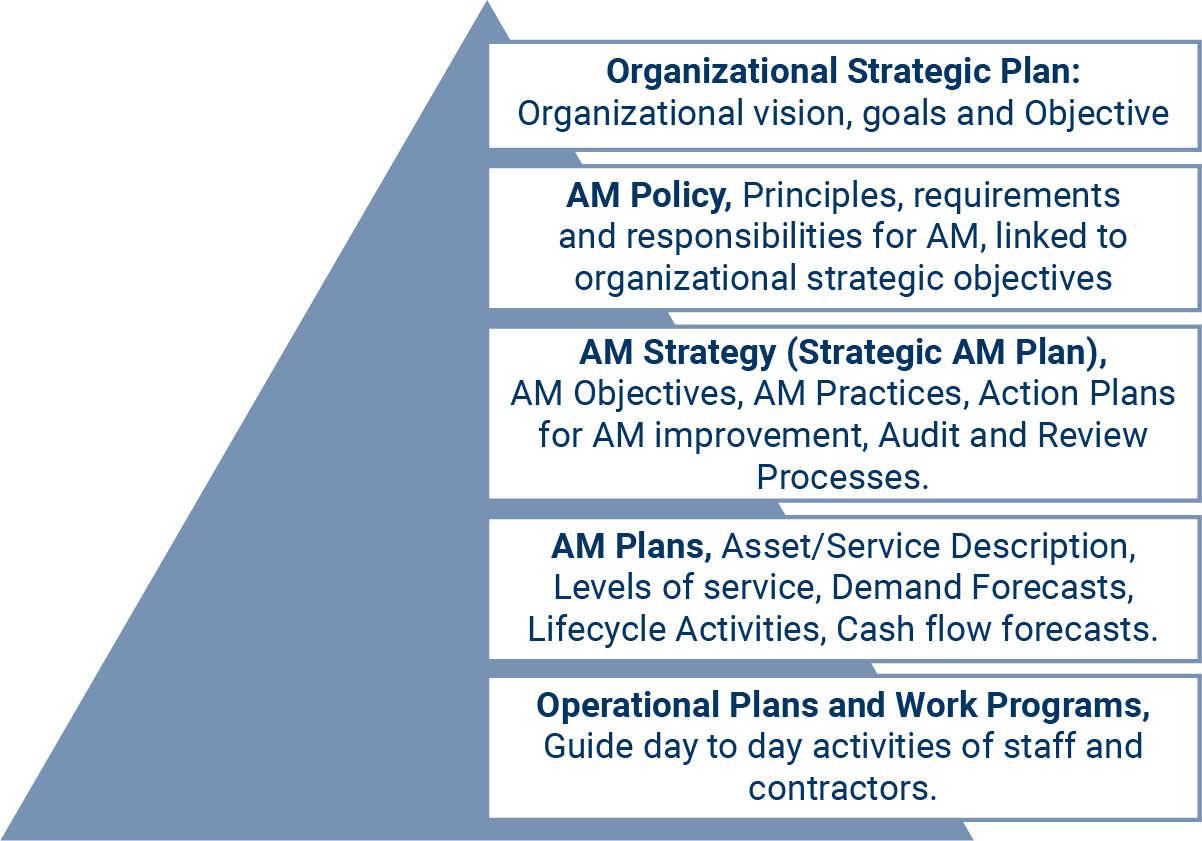ISO 55000: Strategic Asset Management System / IPWEA
ISO 55000 adopts the concept of an Asset Management System, as the figure at right illustrates, which typically consists of several components:
- An organizational strategic plan that set the overall context
- An asset management policy establishes the principles on which the agency makes decisions associated with the management of and investment in infrastructure. It seeks to link the organizational goals and objectives to the principles for management of the infrastructure portfolio.
- The Asset Management Strategy, (sometimes termed the Strategic Asset Management Plan or SAMP) establishes how the agency overall will implement asset management and implement the AM Policy. It articulates a framework of how management processes will function in managing infrastructure and delivering services, as well as how the agency will continuously improve their asset management practices over time.
- Asset management plans developed for individual asset classes (pavements, bridges, ancillary assets) are focused on their individual portfolios. However, they align with the overall agency strategy and are customized to the level of management required.
- Operational plans and work programs guide routine activities and have a line of sight to overall agency goals in this structure.
Within the ISO structure, the TAM framework includes these components but each component may vary in scope. For example, the SAMP may require all asset classes to forecast demand, establish service levels and have performance indicators, but compliant sub-asset management plans may have different levels of complexity. A bridge asset management plan may be more robust than one for network culverts. The agency can select the scope and structure appropriate for each aspect within the portfolio.
Asset Management System Components
Source: Institute of Public Works Engineering Australasia. 2015. International Infrastructure Management Manual (IIMM). https://www.ipwea.org/publications/ipweabookshop/iimm
Read more in the chapter: 2.1.2 Creating a TAM Policy
